The book pictured below is a wonderfully mordant, affectionate and occasionally hilarious overview of the "longest vowel-covered stretch of real estate in the world."

Some relevant quotes:
Ohio, Indiana, Illinois, and Iowa cover 900 horizontal miles, house more than 32 million people, but use only nine letters: A, D, H, I, L, N, O, S, and W.
"What geography can give all Midwesterners," writes Indianapolis-born Kurt Vonnegut, "along with fresh water and topsoil ... is awe for an Edenic continent stretching forever in all directions."
The galaxy's most important region is not only a gift to Earth from God himself, but it is truly a mystery, wrapped in a riddle, then deep-fat-fried and served on a stick at the Iowa State Fair. // The Midwest: God's gift to planet Earth
Here are observations about 10 aspects of Ohio, leaning a little towards Central Ohio and Columbus.
① Libraries and parks... but not pools

We live one block south of this sign. We have truly benefited from Columbus's wonderful provision of parks and libraries. Columbus Metropolitan Libraries is a tribute to the staff of the libraries and the current Director, Pat Losinski, who have the drive and vision to substantially build out and refurbish the network of libraries across all parts of the city. And to create the community support at the ballot box for that work. For what it's worth, Ohio libraries perform very well in Library Journal's index of public library services. Columbus, and Ohio generally, is also very well served by parks. The exceptional Whetstone Park was the natural hinterland of family life as our children grew up, as we walked our two dogs, and enjoyed the ravines, the cycle path by the Olentangy river, and wonderful Park of Roses.



Whetstone Park. Right: our dog Douglas in the Park of Roses
We also enjoyed other parks in Columbus and Franklin County and the fine network of State Parks around Ohio. I was somewhat surprised to see that Columbus did not score better on ParkScore, a ranking of cities in the US from the Trust for Public Land, although it is interesting to see Cincinnati high on the list. Criteria they use are acreage, investment, amenities, access, and equity. That said, the measure seems to be at the level of the municipality; it would be interesting to see a similar measure by metro area, or county or state, which might better track our experience.
I suggested to City Nerd once that it would be interesting to explore cities by a 'civic infrastructure index' which looked at per capita provision of public parks, libraries and pools by some metric. I was sure that Columbus would score very well for parks and libraries (until I saw the ParkScore result!), but not for public pools. Public pools manifest community, but are also important for year around health and wellness. There are pools in city rec centers in some of the municipalities that are Columbus suburbs, and of course there are private pools (often only open in summer months). But the public provision of pools in the city of Columbus itself is very poor. The Rec Center on the sign above was a lovely resource as the children grew up but it does not contain a pool. I am not sure why this is so. It seems to be a broader US issue, maybe in part because of broad private - paywalled - provision. The contrast between public pools on the one hand, and parks and libraries on the other, was taken up recently in an NYT op-ed entitled When It Comes to Swimming, ‘Why Have Americans Been Left on Their Own?’:
The most beloved public pools, when they receive good investment, attract Americans of many backgrounds, creating a space for people to swim and play together who may not otherwise interact. Like libraries and parks, they are an essential piece of social infrastructure in a democracy.
“You give people a place where they feel like they belong, where they have some sense of trust and faith in the government,” said Eric Klinenberg, a sociologist who studies public space and the author of “Palaces for the People,” a book about the contribution of libraries to public life. Instead, he told me, “we’ve created this environment where wealthy people in cities can go on the market and buy safe places for their children to play and swimming lessons.” // NYT


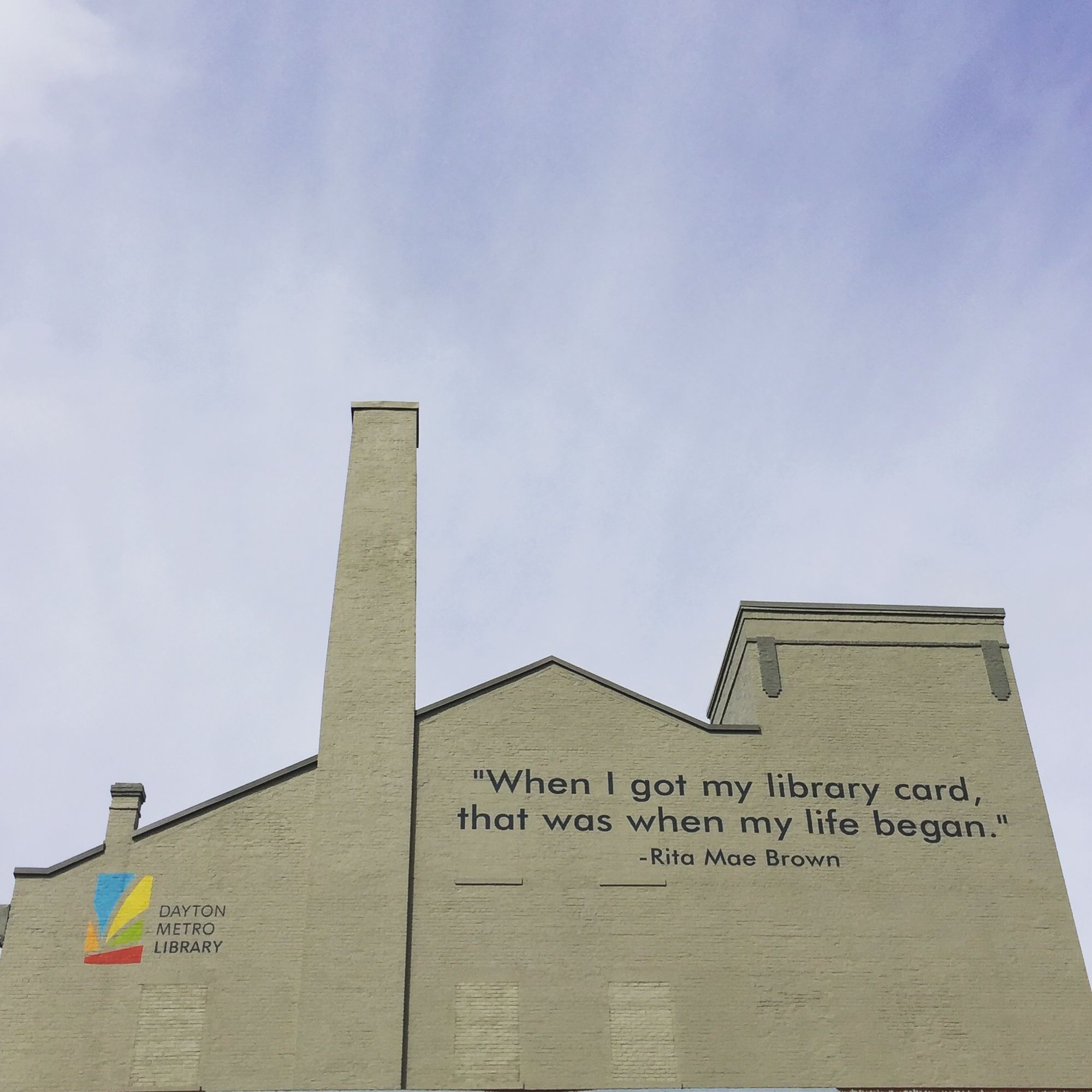
New Karl Road branch in Columbus. Children's library in a branch of Cuyahoga County Public Library (Cleveland). A wall near Dayton Central Library.
② Ohio River
The Ohio River is formed from the junction of the Allegheny and Monongahela rivers in the centre of America's 'bridgiest' city, Pittsburgh. The setting is spectacular, especially when viewed from the top of one of the city's funicular railways. It was somewhat infamously listed by US Today as the number 2 beauty spot in the US. But acknowledging that this is a subjectively assembled list, I don't think this is such a far-fetched claim. It deserves more widespread recognition.
But the Steel City's aesthetic appeal is undeniable, as is its very American capacity for renewal. Standing atop Mount Washington, the steep hill that rises giddily on the city's south side, sightseers enjoy the unforgettable panorama of the Allegheny and Monongahela rivers flowing together to create the mighty Ohio, that waterway so essential in the nation's settlement. // USA Today
Ohio is named after the Ohio River, which forms its border to the South and East. Much like Ohio itself, the Ohio River is under-appreciated. According to Wikipedia it discharges more water into the Mississippi than the Missouri and is the biggest river of the whole system. About 10% of the American population live in the Ohio River basin.
Fascinating video which notes the importance of the Ohio River for city building and westward expansion. Ohio River cities Louisville, Cincinnati and Pittsburgh all make the top ten.
This scale means it was historically important .. as a thoroughfare for the Native Americans, for invading settlers, and for major industrial and commercial freight. Flowing through the rust belt, the Upper Ohio has been heavily polluted, with industrial towns like East Liverpool (see later) and Martin's Ferry (the birthplace of poet James Wright, who wrote much about his birthplace, Ohio and the Ohio River) on its banks.
It was, and is, an important boundary. It was the southern limit of the Northwest Territory, and – significantly – the physical as well as political boundary between the slave owning states and the free states to the North.


National Underground Railroad Freedom Center, Cincinnati, and three rivers coming together in Pittsburgh
Thousands of slaves escaped across the river, and it became known as the River Jordan. Toni Morrison, a native of Ohio, set Beloved in Cincinnati.
The expression "sold down the river" originated as a lament of Upper South slaves, especially from Kentucky, who were shipped via the Ohio and Mississippi to cotton and sugar plantations in the Deep South. // Ohio River, Wikipedia
This history is documented in the important and harrowing National Underground Railroad Freedom Center, in downtown Cincinnati looking over the Ohio River.
Our physical location in downtown Cincinnati is just a few steps from the banks of the Ohio River, the great natural barrier that separated the slave states of the South from the free states of the North. Since opening in 2004, we have filled a substantial void in our nation’s cultural heritage. Rooted in the stories of the Underground Railroad, we illuminate the true meaning of inclusive freedom by presenting permanent and special exhibits that inspire, public programming that provoke dialogue and action, and educational resources that equip modern abolitionists. // National Underground Railroad Freedom Center
③ Native American earthworks



Mounds at Hopewell Park. A road going through a mound at Fort Ancient. Serpent mound.
The Native American earthworks and burial mounds were a revelation to us when we first arrived in the US. We could not understand why they are not more widely known, even among friends and colleagues from Ohio itself. Ancient structures, they are massive engineering feats, involving the movement of tons of earth and involving complex scientific and astronomic measurement. They are integrated with the landscape while being enduring marks of human creation. They are amazing ... and moving.
There are mounds in several states, although there is a concentration in Ohio, spread across several sites. The Serpent Mound is particularly affecting.
Serpent Mound, in Adams County, is the largest documented surviving example of a prehistoric effigy mound in the world. It is a sinuous earthen embankment 411 meters long, including an oval embankment at one end, which has been interpreted variously as the serpent's eye, part of its head, or a secondary object, such as an egg, grasped in the serpent's open jaws. // UNESCO, World Heritage Convention
There is a Museum at one of the sites, the Fort Ancient Earthworks & Nature Preserve, which documents the culture, achievements and often brutal history of Native American peoples in Ohio. There are now no reservations or federally recognized tribes in the State.
This is a nice summary piece from NPR about the mounds, optimistic that they are about to be successful in their bid for World Heritage Site status. This would deservedly raise their profile, and hopefully create additional interest in sustaining and understanding them, as well as visibly respecting the heritage of the Native American peoples who created them.

In addition, the Hopewell Ceremonial Earthworks address gaps in the World Heritage List identified by the World Heritage Committee. Specifically, a lack of sites representing pre-contact Indigenous American sacred architecture and sites that represent early understandings of science, culture and astronomy.
At the moment, there are 24 World Heritage Sites in the US (including, for example, Fallingwater, The Statue of Liberty, the Grand Canyon, and several national parks). It is right and meaningful to add the mounds.
Update: The bid to have the Hopewell sites designated UNESCO World Heritage Sites has been successful. (10/02/23)

Maya Lin – Storm King Wavefield, 2007-2008
The artist and architect, Maya Lin, grew up in Athens, Southeast Ohio, where her parents were professors at Ohio University. She has acknowledged the influence of the burial mounds on her work, notably the Serpent Mound, and it is very evident in, for example, this massive work at the Storm King sculpture park in New York. This is one of three in a land art series created at different locations in the US.
④ Ohio towns
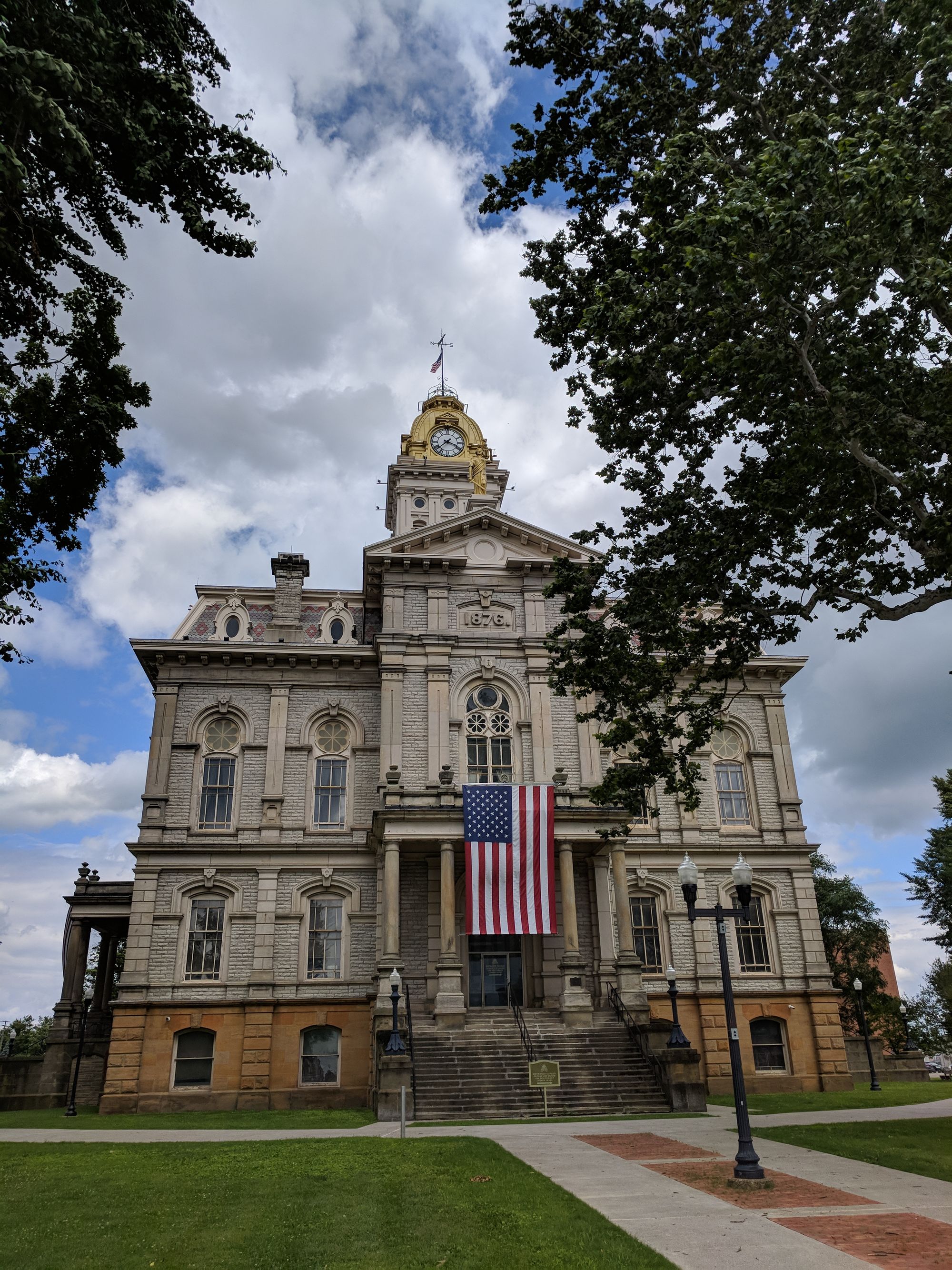


Towns often have imposing town halls or court buildings in a central square: this one is in Newark. A street in Chillicothe. And the railway and grain silos in London.
There is great bustling variety in the towns of Ohio. One is always close to interesting local industries, cultural institutions, architectural and industrial heritage. Recently, for example, when visiting Wooster (home of the liberal arts college), we drove on to Orrville to see the Smucker's store ("Smucker's is to Orrville what Coke is to Atlanta").
Ohio shares economic and social challenges with its neighbors (Kentucky, West Virginia, Michigan, Western Pennsylvania, Indiana), including the overall decline of manufacturing and industrial jobs, comparatively high drug-related mortality rates, and population loss. This is also apparent as you drive around Ohio, as is strong resilience and regeneration. Here are several illustrative towns selected from the many options.
Yellow Springs, comedy and education
Close to Dayton, in Southwest Ohio, it retains an alternative feel (British readers: think Glastonbury). Even if it has been more commercially developed over the years, it is still the place to buy incense, model dragons or elves, and tie-died t-shirts. There are interesting stores, murals, crafts, and events. It is known for progressive politics, arts, and surrounding areas of natural beauty.
Yellow Springs is the home of Antioch College and of Dave Chappelle. Dave Chappelle's father was a professor in Antioch and he spent time there growing up. Antioch has had mixed fortunes of late, and a group of alumni is trying to give it new life. I hope they succeed, both for the town itself and for an institution with a distinctive history and place in US higher education.
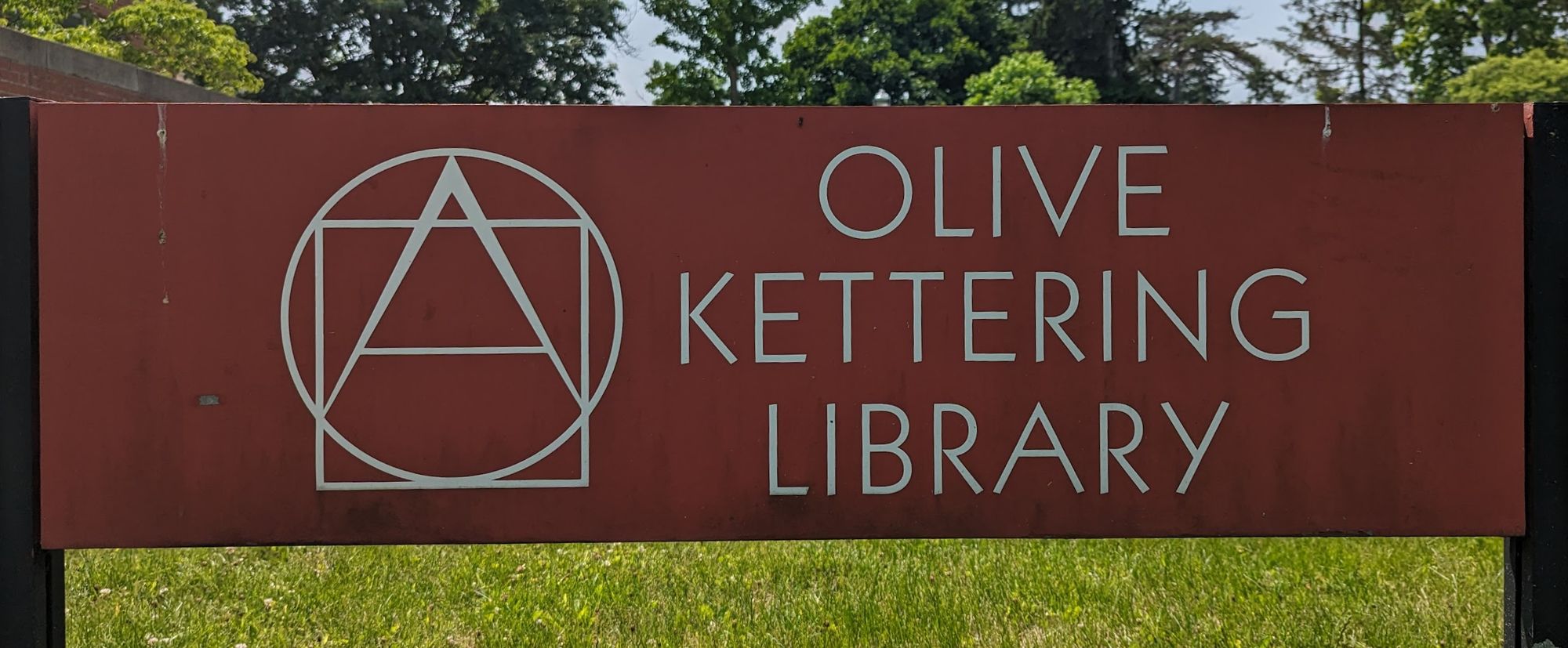


Yellow Springs: Antioch, arts, comedy
Lithopolis, dictionary and honey
Lithopolis is a small town in central Ohio, so-named because of nearby stone deposits ('lithos' is the Greek for 'stone').
It was the birthplace of Adam Willis Wagnalls, co-founder of the Funk & Wagnalls Company, publisher of the famous dictionary. Through his daughter, Mabel Wagnalls Jones, the town benefited from the Wagnalls legacy.
The Wagnalls Memorial Library is constructed of native free stone in the Tudor-Gothic Style. A few years later she established the Wagnalls Foundation. The Wagnalls Foundation maintains a close relationship with the Library and is entrusted to supervise and protect the Library’s property and assets. The Foundation also oversees and distributes the Wagnalls College Scholarship Program that awards local graduating high school seniors and college students who meet specific requirements with tuition money for their education. // Wikipedia
Lithopolis is also home to an annual Honey Festival, which is ... lovely. Educational, entertaining, encouraging ... there are vendors of honey and bee products, competitions, bee beards, mead, food, crafts.

Nelsonville, bricks and music
Nelsonville in Southeast Ohio is the gateway to the Hocking Hills, an area of waterfalls, interesting rock formations, wooded hills, discussed further below. Historically, it was a coal mining area, and "in the early 1900s, more coal was shipped from its mines by railroad and canal than from any other city in the country" (Advisory Council on Historic Preservation). It was one of the Little Cities of Black Diamonds, coal-mining towns in Appalachian Southeast Ohio.



A reminder of coal history. Advertising the Nelson Music Festival on Snowville milk carton: note the great Ohio/Starbrick logo. Star Bricks in a Columbus sidewalk.
There were also abundant clay deposits, and Nelsonville was the source of the lovely Star Brick, now found throughout the region.
Historically, the clay found there produced an enormous number of bricks for street and road paving. In addition, the clay was used in art pottery, kitchen- and tableware, building bricks, field tiles, sewer pipes, roofing tiles and more. In fact, Ohio was once home to 2,000 of the 5,000 brick plants in the country, and even today the state still has several producers of various clay products. // Columbus Monthly
An important part of the regeneration of the town is the Music Festival, a major event which now draws big acts to Southeast Ohio. See the milk carton above! The logo for the festival is one of the best I have ever seen, incorporating a star brick and the map of Ohio (whose shape suits it for such uses). The Festival is produced by Stuart’s Opera House an active venue and promoter in the town, which re-opened in 1997.
Nelsonville is home to Hocking College, a community college with an environmental focus. Nelsonville is in the Athens Micropolitan Statistical Area (urban clusters defined by the US Office of Management and Budget). Athens is the home of Ohio University. It has the characteristics of a college town and has a very nice setting on the Hocking River surrounded by hills.



Athens
Fairport Harbor, Finland and salt
Fairport Harbor is on Lake Erie, effectively a suburb of Cleveland. It is a lake port, once busier than now, with two lighthouses, one operated as a small museum and viewing station. It has at least two other distinctions. First is its celebration of the Finnish immigrants to the area. There is a Finnish Heritage Museum, and there is also a small store selling Finnish and other Nordic items. Second, it is home to an extraordinary mining operation, as Morton's Salt has built out salt mines deep under the lake. They mine a large proportion of the salt spread on US roads in their Fairport Harbor operations.
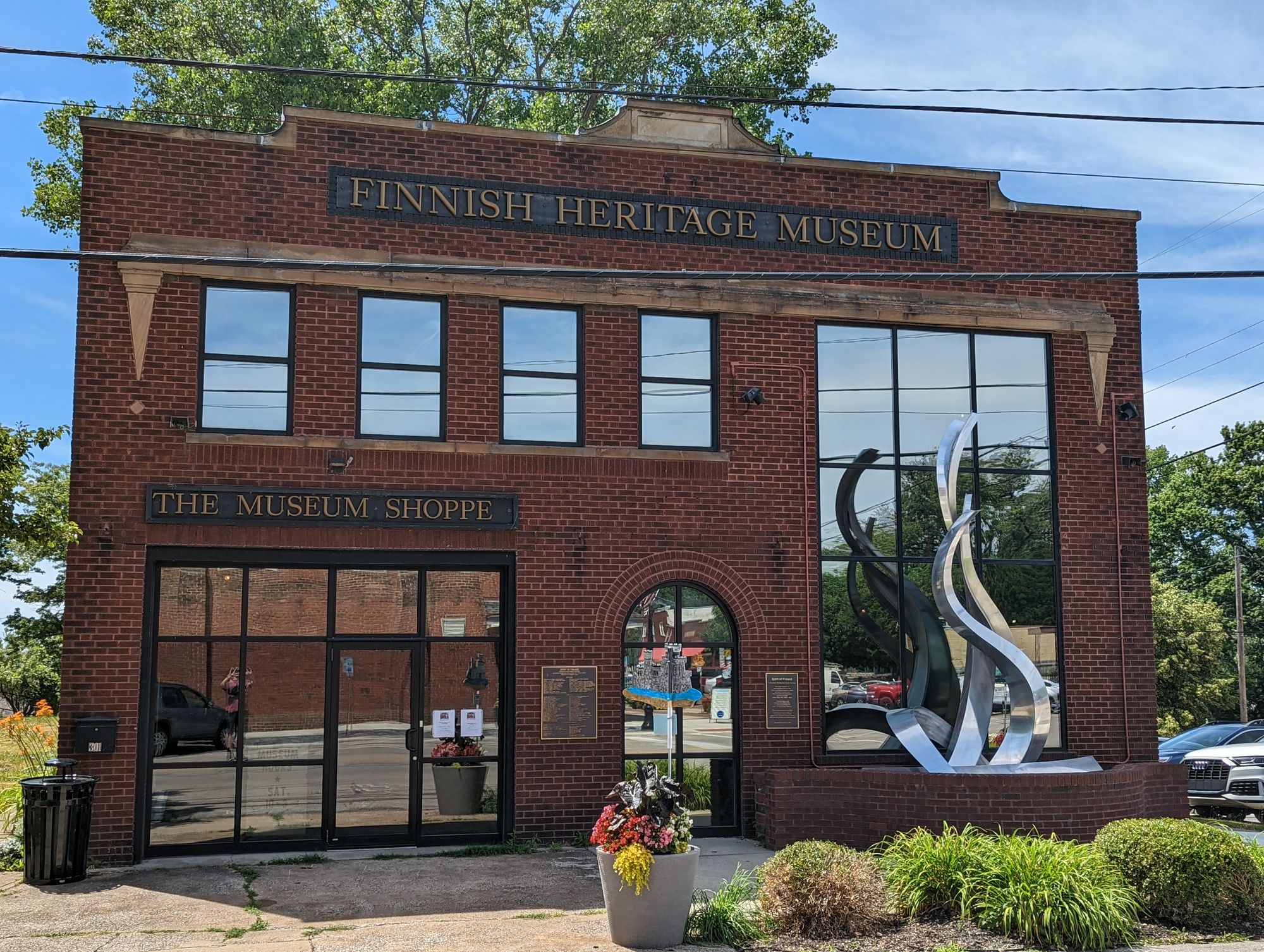


Finnish Heritage Museum. Lighthouse. Morton's salt.
East Liverpool and ceramics
East Liverpool is on the Ohio River in the corner between Ohio, West Virginia and Pennsylvania. It was once known as the pottery capital of the world, with 85 companies open at various times in East Liverpool and surrounding towns. It produced two thirds of the national output of ceramic toilet and table ware from 1880 to 1950 [details from Wikipedia]. Many of the early potters immigrated from Stoke on Trent in England and the cities remained twinned. It tells a mixed story: of pride in its historic role, of serious industrial decline, and of some regeneration.
The Fiesta Tableware Company still produces the well-known fiesta ware in Newall (home of the largest, purportedly, tea pot in the world), across the river in West Virginia.
Carnegie's uncle lived in the town, and there is a distinguished looking Carnegie Library. There is also an intriguing Ceramics Museum, chronicling the emergence (and decline) of the industry and the variety of pottery made there.
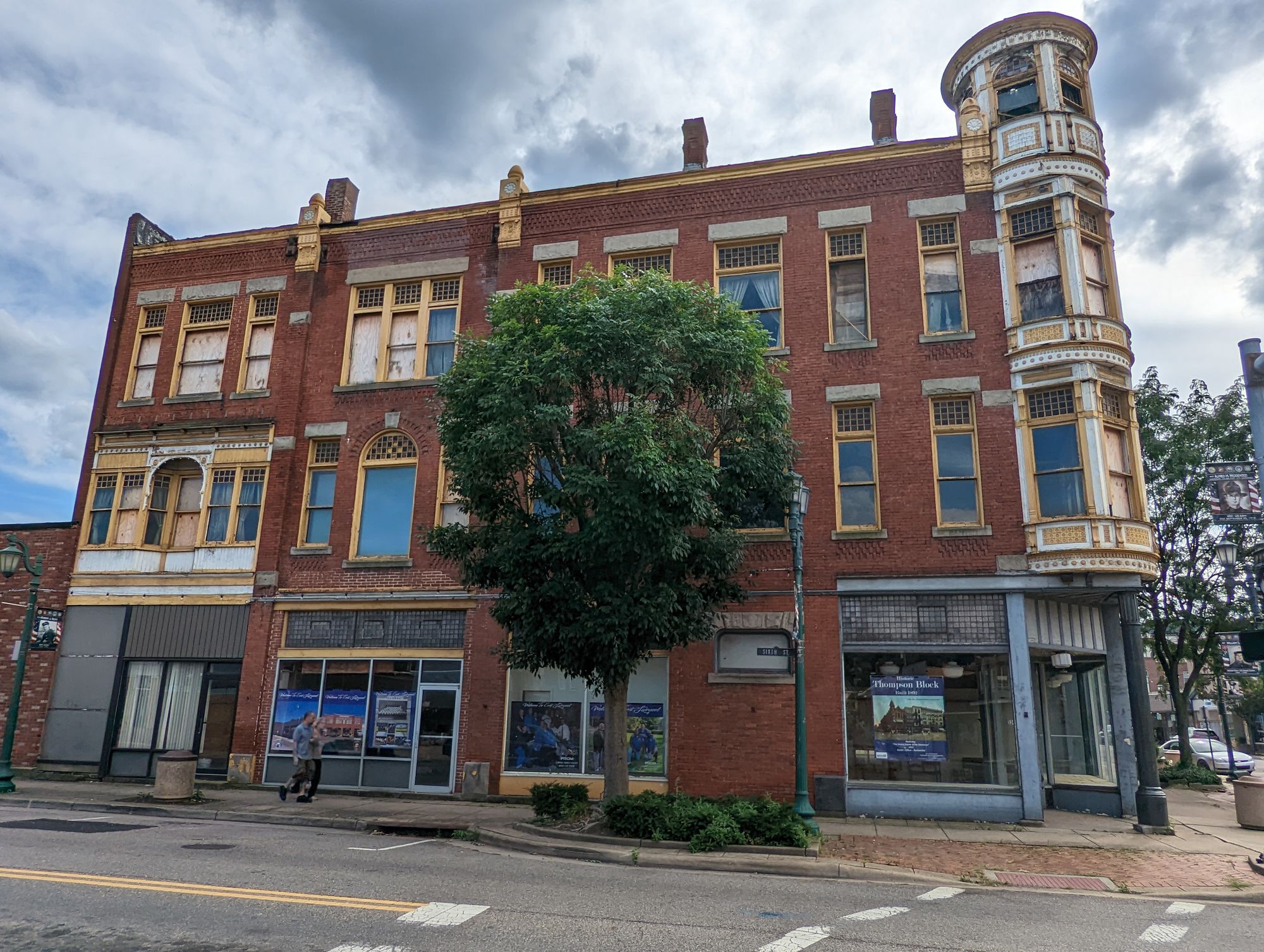


East Liverpool. Downtown. Belleek china - influenced by the Irish china of the same name. The Museum of Ceramics.
Bonus: Dublin, Ohio
Although a separate municipality, Dublin is effectively an affluent suburb of Columbus. Dublin, Ohio, has no real connection with Dublin, Ireland. However, it does host an annual Dublin Irish Festival, in sweltering August. This is quite expansive and is similar to such festivals elsewhere (according to this source, Milwaukee hosts the biggest Irish festival in the US). It usually attracts an interesting musical line-up, with acts from Ireland, the US and elsewhere. The major redevelopment of the Dublin central area on the Scioto River is a manifestation of the general growth in central Ohio. It is the home of OCLC (and of Wendy's).
Incidentally, Irish Novelist Joseph O'Connor wrote a book about the 9 towns named Dublin in the US, including Dublin, Ohio. The brief review in Publishers Weekly is not flattering.






The new Dublin public library. Bridge over the Scioto River joining 'old' Dublin and new urban developments on the East Bank. Richard Thompson singing at the Dublin Irish Festival. The Field of Corn, a distinctive and appropriate sculpture.
⑤ Political geography: the five Ohios
Ohio was the bellwether state when we first arrived in the US: as Ohio voted, so did the nation. The Bliss Institute at the University of Akron offered an analysis of this phenomenon a few years ago, explaining why it was the case based on the distinctive political geography of Ohio. They argued that the regional diversity of Ohio reflected the diversity of the nation as a whole. This diversity is represented by 'five Ohios', each one a distinct region of the State, and each with a socio-economic profile not unlike other parts of the country. The five areas are Northeast, Northwest, Central, Southeast, and Southwest Ohio.
Each region represents a unique collection of big cities, suburbs and rural areas, one or more media markets, and at least one major newspaper. Each region has a distinct political ethos and votes in a different fashion.
Ohio’s regions match the regions of the country as a whole. For instance, Northeast Ohio resembles the country’s Northeast region in relative terms when it comes to the African-American population, population of European ethnicity, and the proportion of Catholics. In contrast, Southeast Ohio resembles the South in terms of poverty and the percentage of Evangelical Protestants. Central Ohio resembles the West in terms of professional/managerial occupations and college degrees. Meanwhile, Northwest and Southwest Ohio resemble the Midwest region as a whole. // Bliss Institute
However, in 2020, for the first time in over half a century, Ohio voted differently than the nation in a presidential election, giving a majority to Trump for the second time while Biden went on to win the election. The AP noted in its discussion of this dilution of Ohio's bellwether status:
Ohio’s population no longer mirrors the nation. It’s whiter, slightly older and less educated than the U.S. on whole. // AP

However, the differences are not only political - which adds to the more general variety. The Southeast looks to Appalachia, and adjoins West Virginia. The landscape is more varied than other parts of the State, especially given the rock formations and waterfalls of the Hocking Hills. This is very different from the rustbelt Northeast, for example, with its history of industrialization. Close to the Great Lakes, and anchored in Cleveland, this region has shared in general industrial decline, and is exploring regeneration. Here you will find the world center of the rubber industry, Akron, home town of LeBron James and Chrissie Hynde (who had a vegan restaurant there for a while), as well as Youngstown. The Southwest is anchored by the Cincinnati metro area, which extends into Indiana and Kentucky, and the Bluegrass region. The Northwest looks out over flat Indiana.
The group Over the Rhine are named for an historic area of their native Cincinnati. Their song Ohio.
⑥ Cities ... the three Cs
Ohio's three largest cities – Cleveland, Columbus and Cincinnati – are on a north-east to south-west diagonal axis through the state. Each anchors one of the 5 Ohios (Cincinnati in the Southwest, Columbus in Central, and Cleveland in the Northeast).


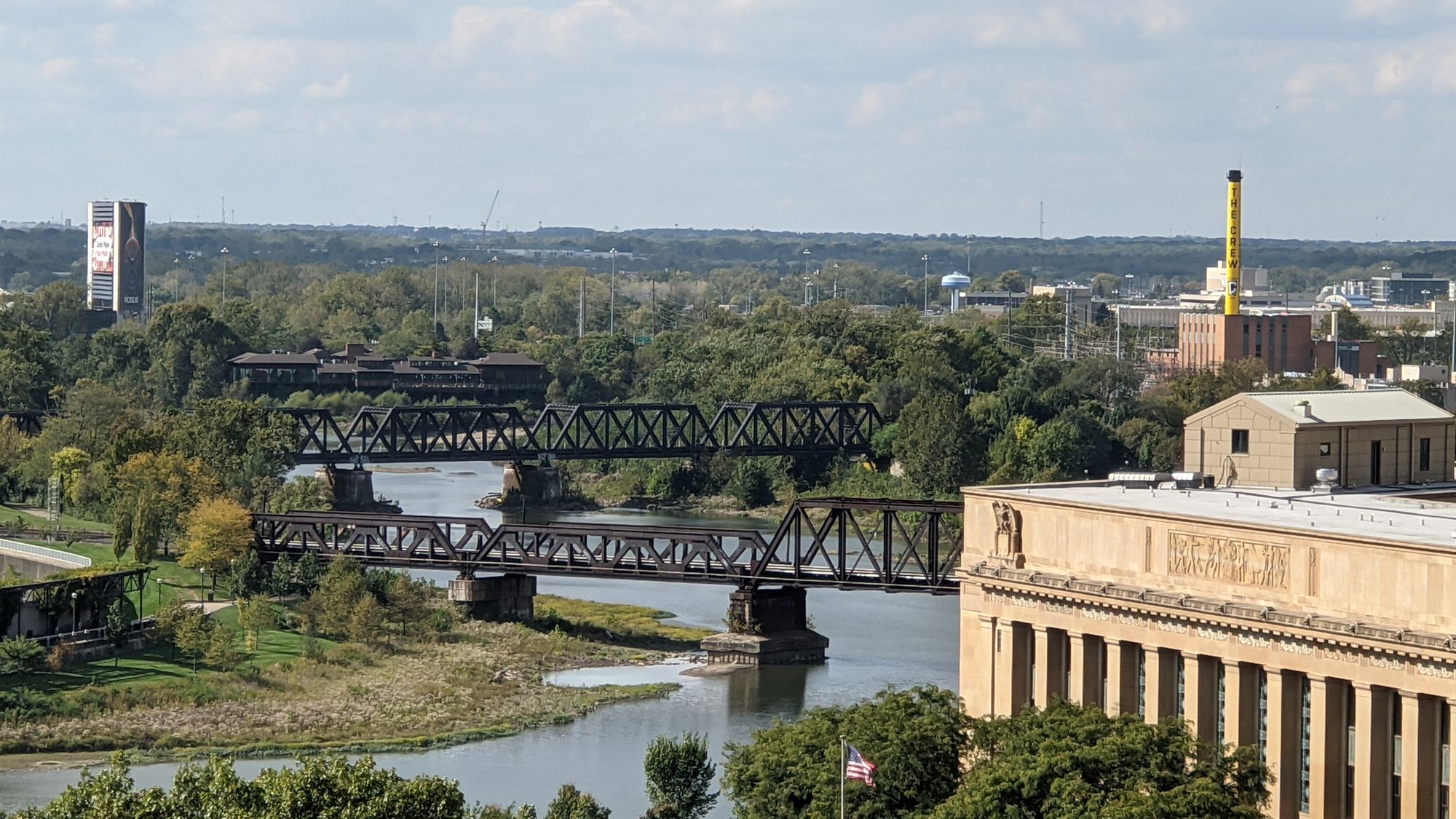
Columbus: Landmark Leveque Tower. Columbus from the sky, note the OSU football stadium, one of the biggest in the world. The Scioto River.
The three cities are very different, as noted in the political analysis of the state. Columbus is the capital and the largest municipality, although Cincinnati anchors a larger metro area, and Cleveland is the biggest when the radius is widened to the combined statistical area.
Cleveland and Cincinnati are rust belt cities with strong industrial and manufacturing legacies, rich industrial architecture and urban texture. They each played bigger roles historically than now in the cultural and economic life of the US, while continuing to be economically important and strong regional players. They have each shared the general regional decline in population in the twentieth century, especially Cleveland. They also have distinctive settings: Cleveland on the lake, and Cincinnati on the Ohio River, with several fine bridges.
I always thought Columbus had something of an inferiority complex, lacking some of the historical distinctiveness and identity of its sibling Cs. Not to mention its lesser sporting prowess, although it does make up somewhat with powerhouse college football. The name, Columbus, is somewhat generic and context-free. However, that may be changing as Columbus is thriving. It is the State capital, of course, and Ohio State is the dominant university in the region. It is also the home of the Ohio State Fair. Contra trends elsewhere, it is growing in population and has continued to attract major industries, including a major $20B Intel plant being developed to the East of the city. It has some interesting concentrations: notably fast food (Wendy's, Sbarro, White Castle, Bob Evans, Max & Erma's) and fast fashion (L Brands, Abercrombie & Fitch, Express, Hollister, Lane Bryant, Victoria's Secret, Justice). Columbus is home to Battelle, to both OCLC and Chemical Abstracts, and to pioneering library consortium, OhioLINK. It has a services, health and education focus, and does not share the rust belt characteristics of the other two Cs.


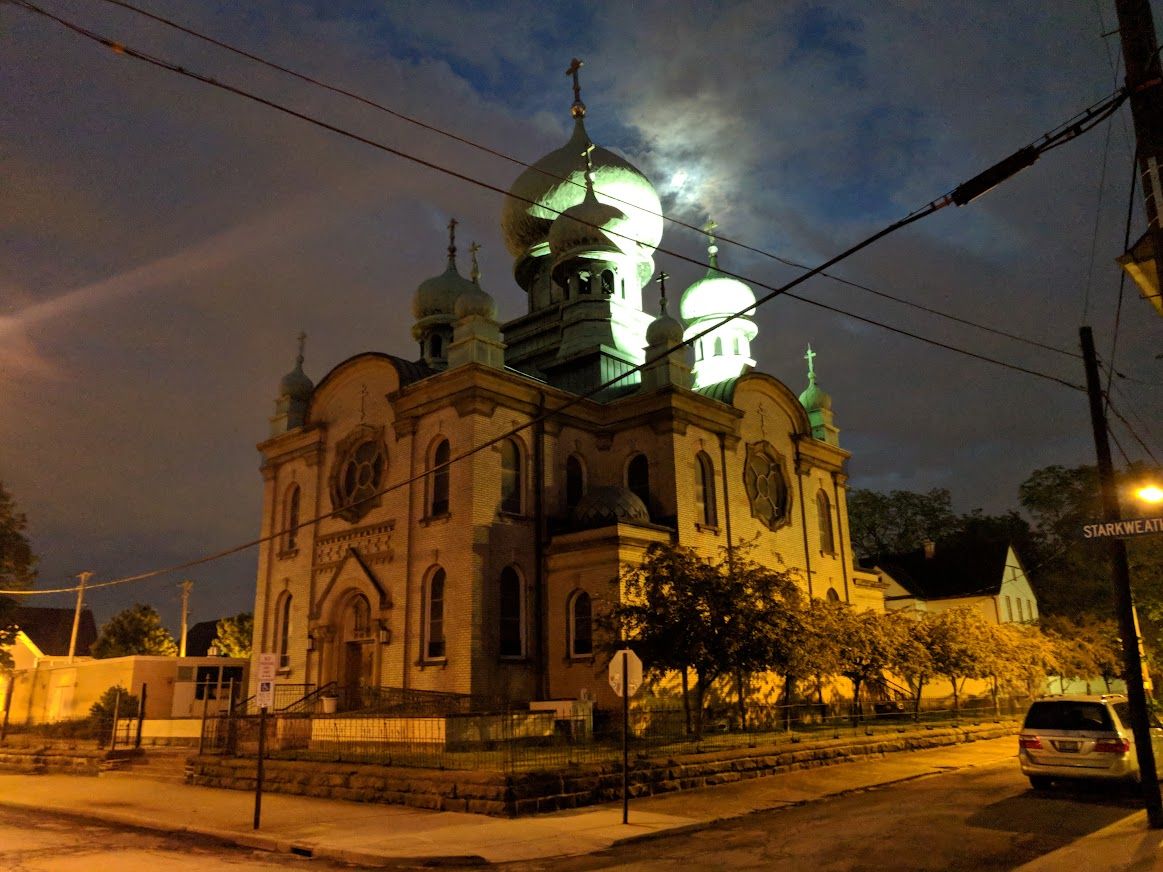
Excellently extended Art Museum. Rock and Roll Hall of Fame in an I.M. Pei waterfront building. St. Theodosius Russian Orthodox Cathedral.
Cleveland is the home of Superman, has a major orchestra, a fantastic art museum, the Rock and Roll Hall of Fame, the nationally important Cleveland Clinic, and a great lakeside location. It is the most racially diverse of Ohio's cities. We like Cleveland a lot: the lake, multiple interesting neighborhoods, the market, the lake, the cultural institutions, especially the art museum, the lake.
Cincinnati looks over the Ohio to the South. Louisville is the next big city on the river, 100 miles further downstream. The airport is in Kentucky. It is home to Proctor and Gamble's, Macy's and Kroger's, not to mention Skyline Chili. The city is rich in industrial architecture and the CityNerd video above names the Roebling Bridge as the finest in the US. Over the Rhine contains many buildings originally constructed by German immigrants in the nineteenth century.
Historically, Over-the-Rhine has been a working-class neighborhood. It is among the largest, most intact urban historic districts in the United States. // Wikipedia

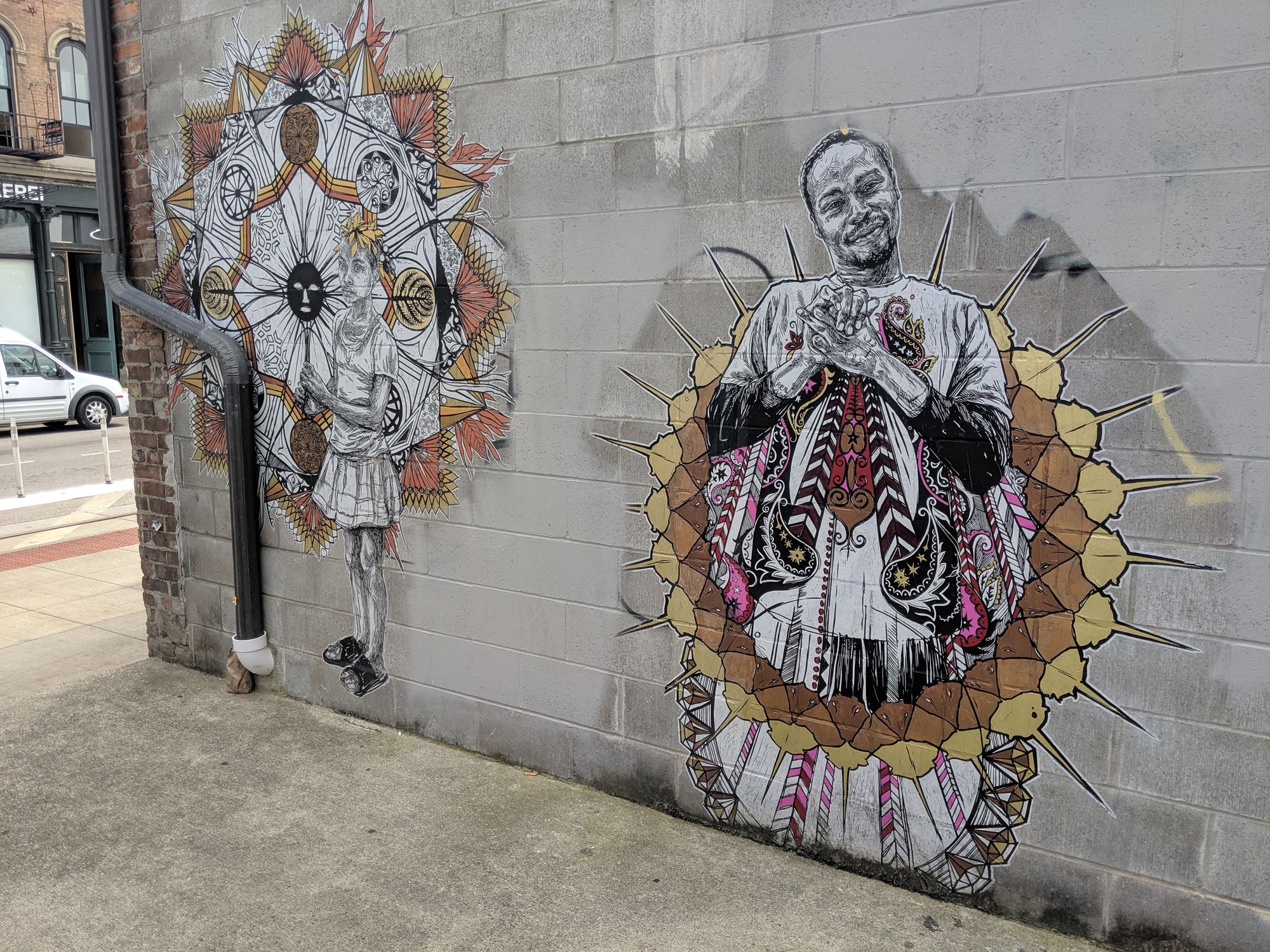
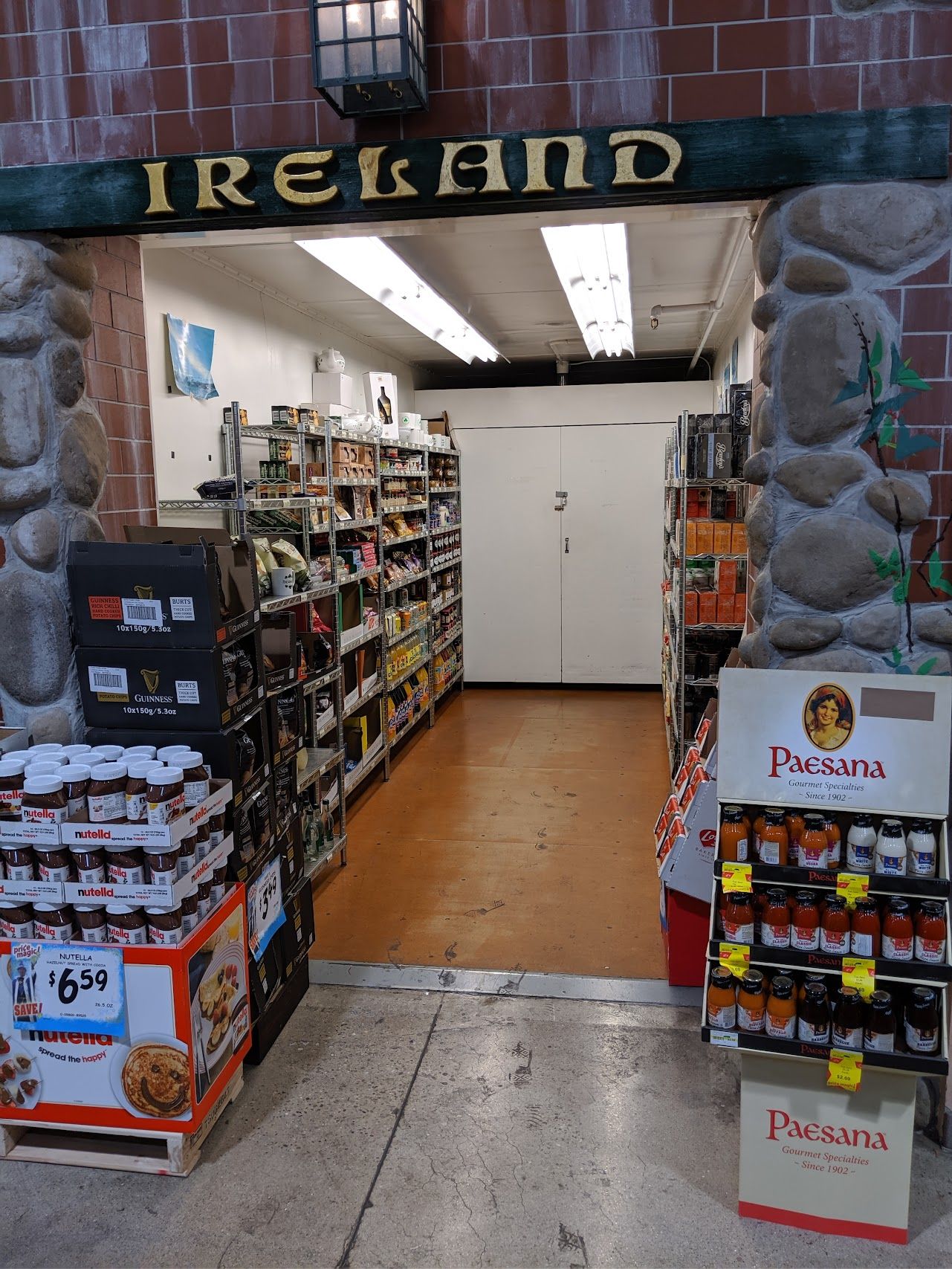
Cincinnati: Art Deco Union Terminal which houses the Cincinnati Museum Center. Street art in Over the Rhine. The amazing and massive Jungle Jim international store.
⑦ Climate and weather
Many years ago, Emma Donoghue wrote wonderfully about her first trip to New York as a child, contrasting the (then, but less so now) monochrome Dublin with the "dazzlingly polymorphous" New York. Her contrast of weather and climate just seemed so right to me when I read it.
That first September day in Manhattan was a slap in the face. The heat! (Ireland has no climate, only weather: subtle variations on "scattered showers".) // Emma Donoghue
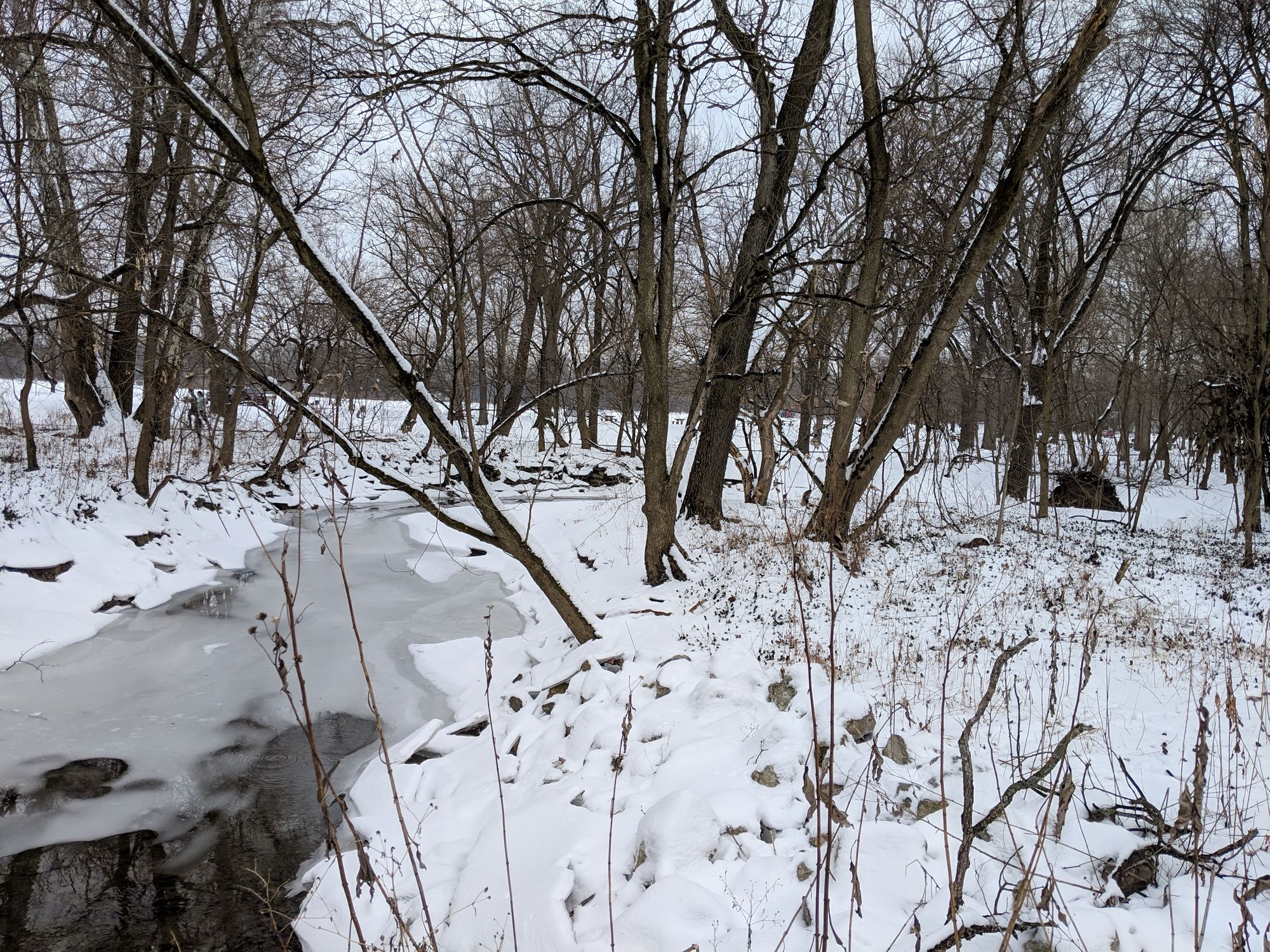

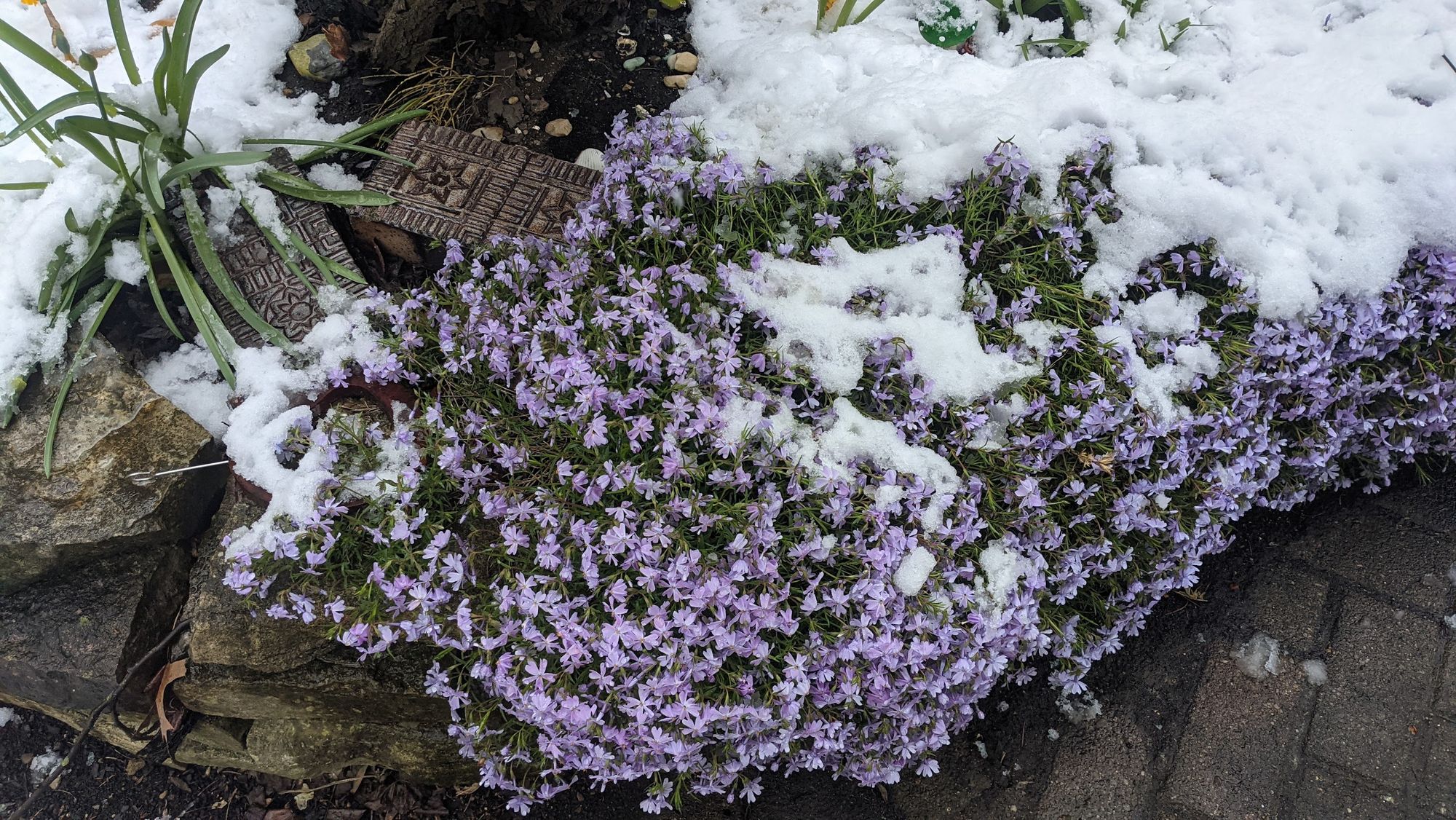
Winter in Columbus
Yes! Ohio has climate: the oven-like heat of our first Summer in Columbus was a shock, and we became accustomed to the very cold winters. The snow could be lovely, especially with intense blue skies, and the ice formations on the trees were magical one year. The drama of thunderstorms. However, we think the very short Spring and Fall are the best, but those perfect days come and go very quickly.

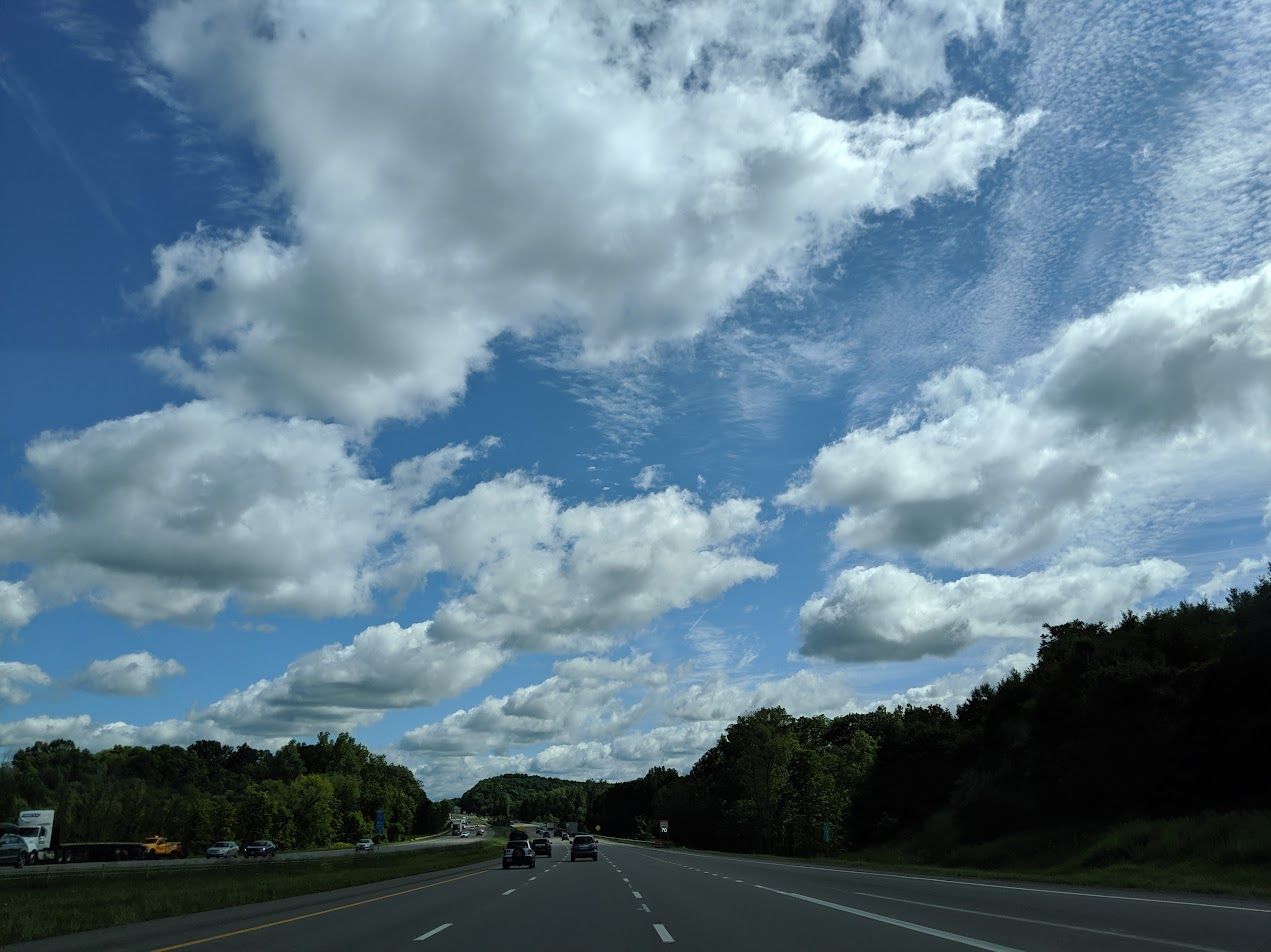

Something wonderful about a road trip into the clouds.
And the vegetable cycles are tied to the seasons. Cherry blossom appears in the Spring. And the leaves in Autumn are breathtaking, like "fire and blood", as Donoghue says. The heat of Summer is associated with fecund growth of fruit and vegetables .. squashes, watermelons, peaches, corn, heirloom tomatoes. Winter bleaches the color from the landscape. I don't have a good picture of the ash white branches of the sycamores without leaves, like bones against the blue sky.
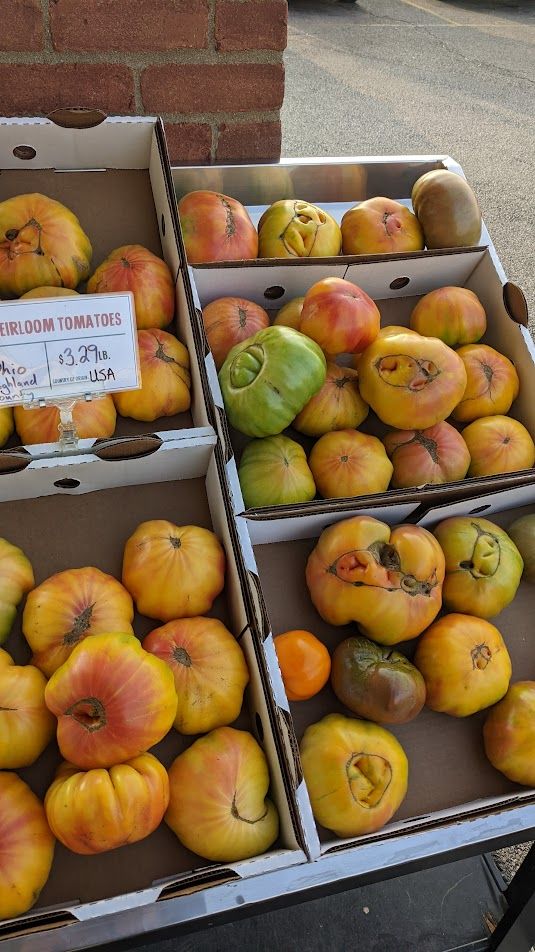


Heirloom tomatoes. Squashes. Peaches in the wonderful Branstool Orchards north of Columbus.
And not pictured here, what is very characteristic of Ohio's plant life is the miles and miles of corn, soy beans, and other crops.
⑧ Colleges and universities
When we first came to the US, we were keen to explore. We gradually widened our radius over long weekends and other breaks. Indeed, we did this for quite a while … pretty much until the children protested and would no longer let us. One feature helped pattern our trips: the presence of a university or college. This was not especially limiting, because it seemed there was a university around every corner.
We were amazed by the richness of the US university system, and by its diversity in so many dimensions – size, setting, mission, focus, public/private.

In Ohio, universities concentrate around the three Cs axis, in the Northwest to a lesser extent, and there are fewer in the Southeast
There is an extensive public university system. Ohio University dating from 1804 is the oldest University in Ohio, located in Athens, a relaxed college town in the Southeast opening up to an Appalachian hinterland. There is great variety in the thirteen other public universities in the Ohio system, which includes institutions with a strong regional focus, as well as those which attract international attention. The University of Cincinnati’s ambition is evident in its well managed campus marked by signature ‘starchitect’ buildings. Of course, this system also includes The Ohio State University, in the center of the state, an academic powerhouse which sits in the global circuits of research and scholarship, as well as being central to the economic, social and cultural life of Columbus and Ohio. These large land-grant public institutions are a major achievement of the US system.
One might wonder if the public system is overextended, and some universities have had financial challenges in recent years. Cleveland State, Akron, Kent State and Youngstown State also cluster in Northeastern urban rust belt settings; Miami (get the t-shirt: “Miami was a university before Florida was a state”) and Wright State (named for the Wright brothers, in Dayton, which continues to be an aviation and aerospace centre) are close to Cincinnati. The youngest university in the system is Shawnee State, founded in 1986 in Portsmouth where the Scioto joins the Ohio River.
There are the well-known liberal arts colleges in picturesque chocolate box settings (Kenyon, Wooster, Denison, Oberlin). The highest-ranking private research university in the state is an important anchor in the cultural and educational quarter of Cleveland, Case Western Reserve University.
But beyond some of these better-known institutions, there is the very broad range of small private colleges dotted across the state, such as the two, yes two, universities in Tiffin, Ohio. Tiffin is home to Heidelberg University, a liberal arts college, and Tiffin University, a private university which “provides a personal and practical education for motivated students who want real-world experience and results.” “There are no ‘ivory towers’ at Tiffin University” as it says on its website. We were also interested in the importance of religious communities, and how many universities offer an education in an explicitly values-based setting. Near Cincinnati, for example, is Xavier ("a liberal arts education in the Jesuit Catholic tradition") and Cedarville ("exceptional academics with a distinctly biblical worldview").
Ohio has one private and one public HBCU, with interesting histories. Wilberforce University is the first private HBCU in the US. Named for the British anti-slave-trade campaigner, it gave its name to the town, in Southwestern Ohio close to Dayton. Central State University, the land grant public university is adjacent and was initially a department of Wilberforce University. Wilberforce was the first college to be owned and operated by African Americans. W.E.B. Dubois taught there for a while in the 1890s.
In the 1970s, the university established the National Afro-American Museum and Cultural Center, to provide exhibits and outreach to the region. It is now operated by the Ohio Historical Society. The university also supports the national Association of African American Museums, to provide support and professional guidance especially to smaller museums across the country. // Wikipedia
Wilberforce was a stop on the Underground Railway, discussed above.

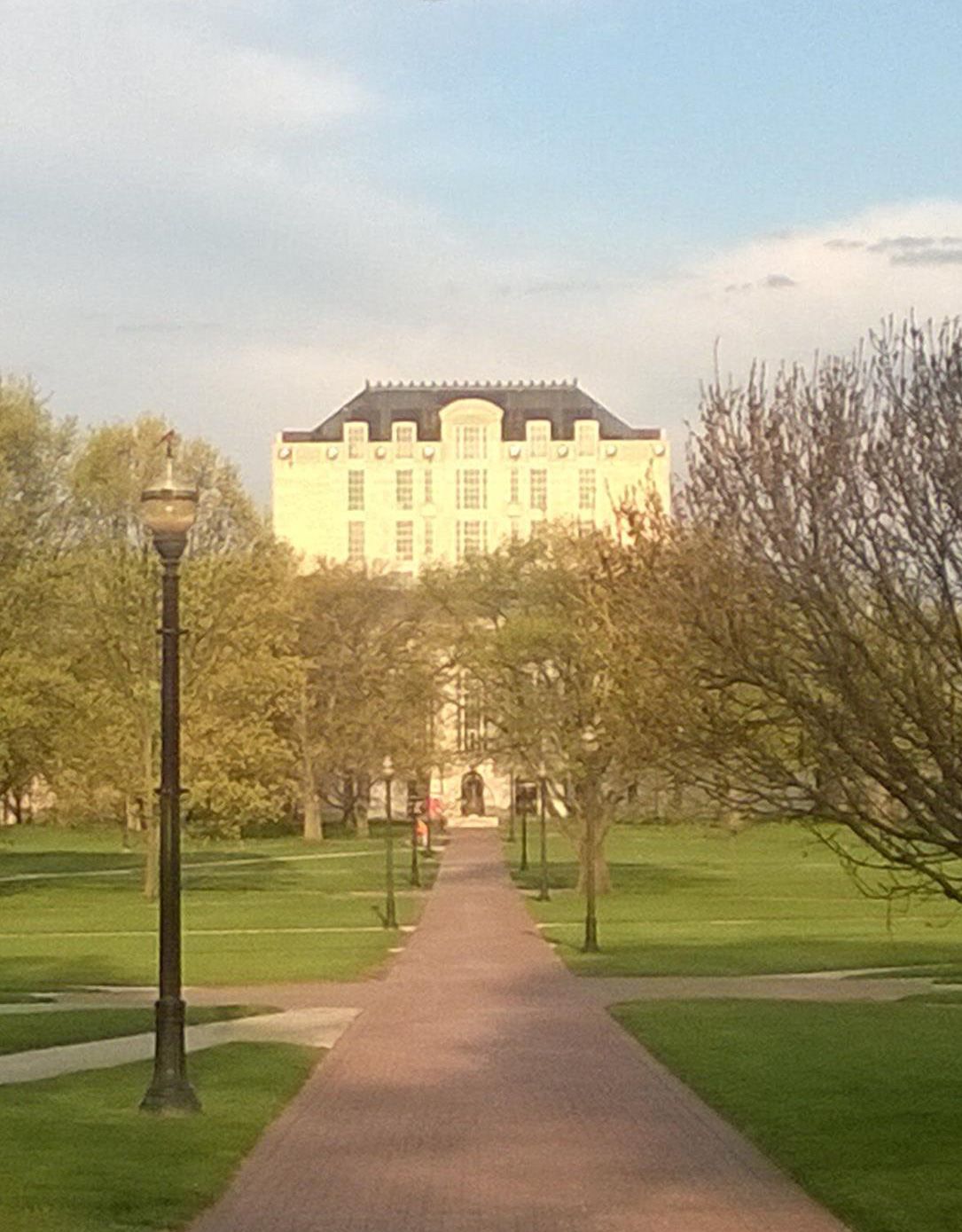




Art Museum in Oberlin College. Thompson Library looking over the Oval at The Ohio State University. A sign showing CWRU and one of its antecedent organizations in Cleveland. Wilberforce University, a private HBCU near Dayton. The Jesuit Xavier University in Cincinnati. Columbus College of Art and Design.
As elsewhere in the US, Ohio's 23 community colleges are important agents of social mobility. I mentioned Hocking College above: it is committed to "student completion, job readiness, job placement and maximizing transfer credit." I always enjoyed the coffee shop at Columbus State Community College in downtown Columbus, stocked with culinary arts student creations.



Mitchell Hall, Columbus State Community College, supported by Columbus restauranteur, Cameron Mitchell. Lecture theater with kitchen. 'Degrees' restaurant, a very nice training restaurant. And, a lovely touch, donor acknowledgements on chopping boards.
⑨ Lake Erie and Hocking Hills



Lake Erie: beach in Cleveland, frozen at Maumee State Park, looking out at downtown Cleveland.
I notice that I tend to the urban and to towns. Ohio certainly does have lots of wide-open flat spaces, but also has lovely natural features. Notable are the Hocking Hills, already mentioned, and the Ohio River and its tributaries. And also ... Lake Erie. Lake Erie and the Hocking Hills are at opposite ends of the State.
The Hocking Hills are in Appalachian Ohio, with cliffs, gorges, caves, and waterfalls formed from erosion of the soft sandstone. They are spectacular and contrast topographically with the dominant flatness of the State.
Update: USA Today has named Hocking Hills as the number 3 best place in the US to see fall foliage. (10/02/23)
Lake Erie does not have the stunning beauty of Lake Michigan or the scale and grandeur of Lake Superior. It is the smallest Great Lake by volume and the second smallest by area. Toledo is at its Western point, and Buffalo at the Eastern. Detroit is to the North, and Cleveland to the South. The Niagara Falls are on the Niagara River, through which Lake Erie drains into Lake Ontario. It is connected to Lake St Clair by the Detroit River, and from there to Lake Huron. The Great Lakes are an amazing phenomenon, containing 21% of the world's fresh water. Ohio is very much part of the Great Lakes region.
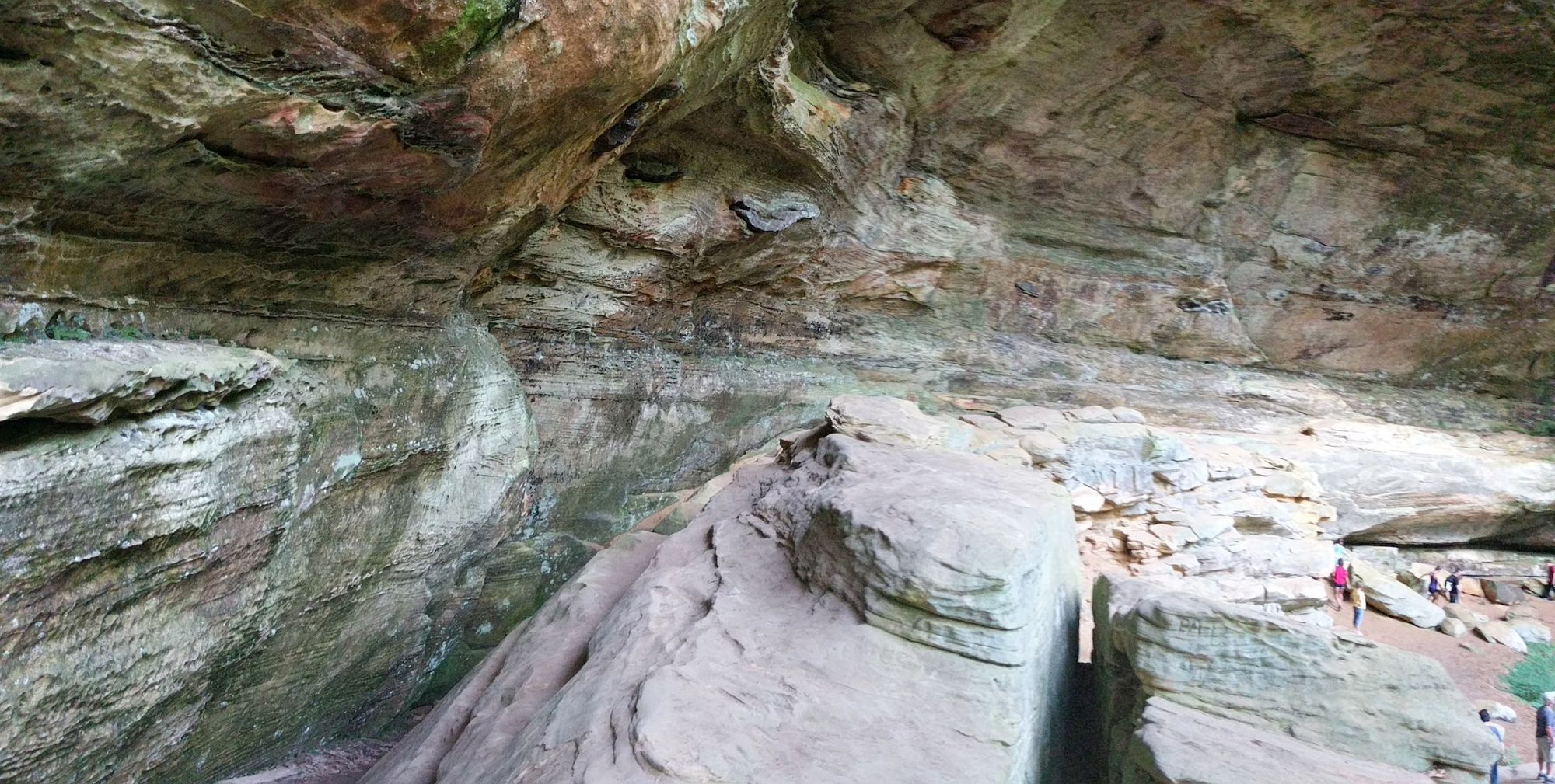
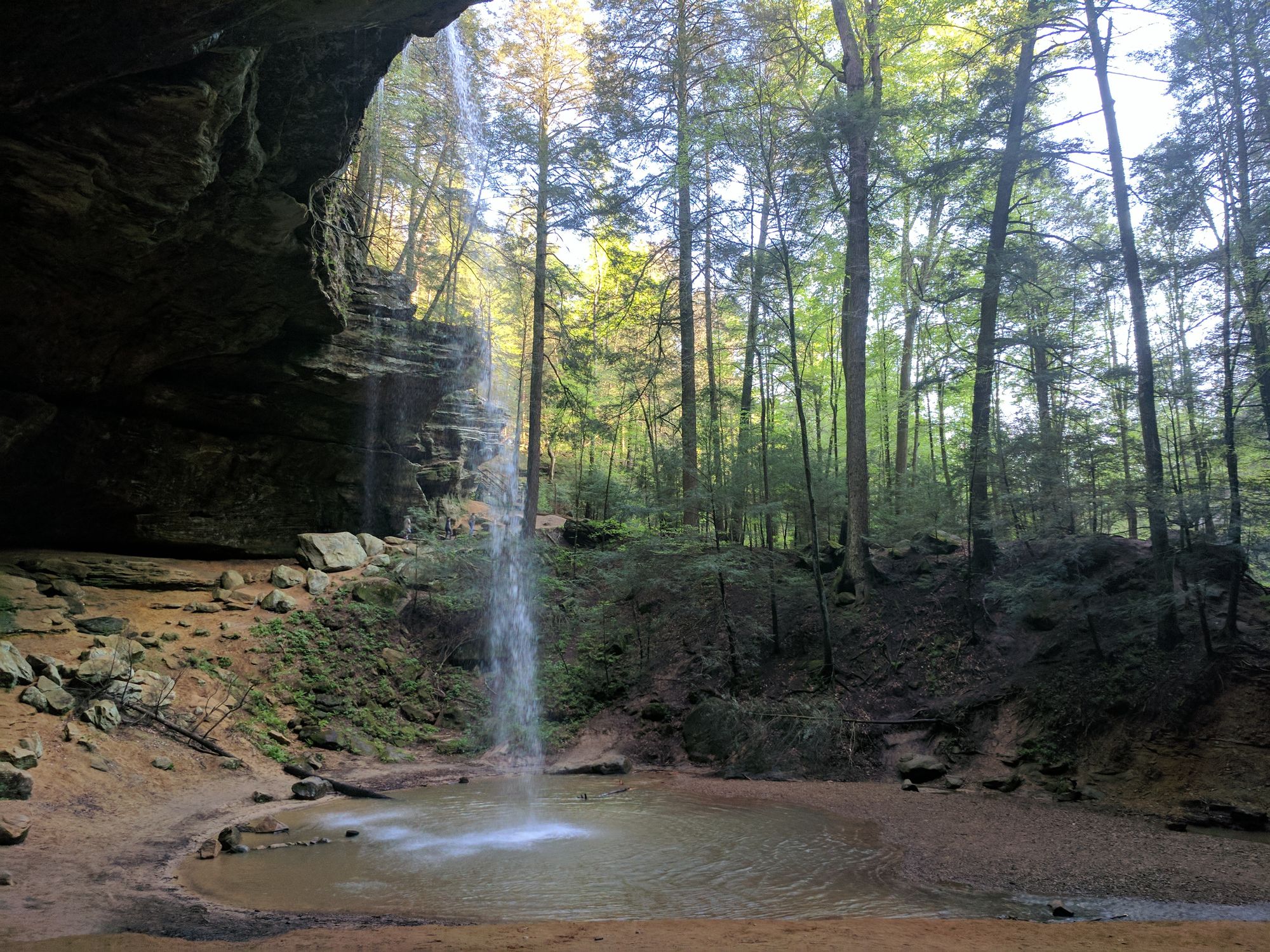
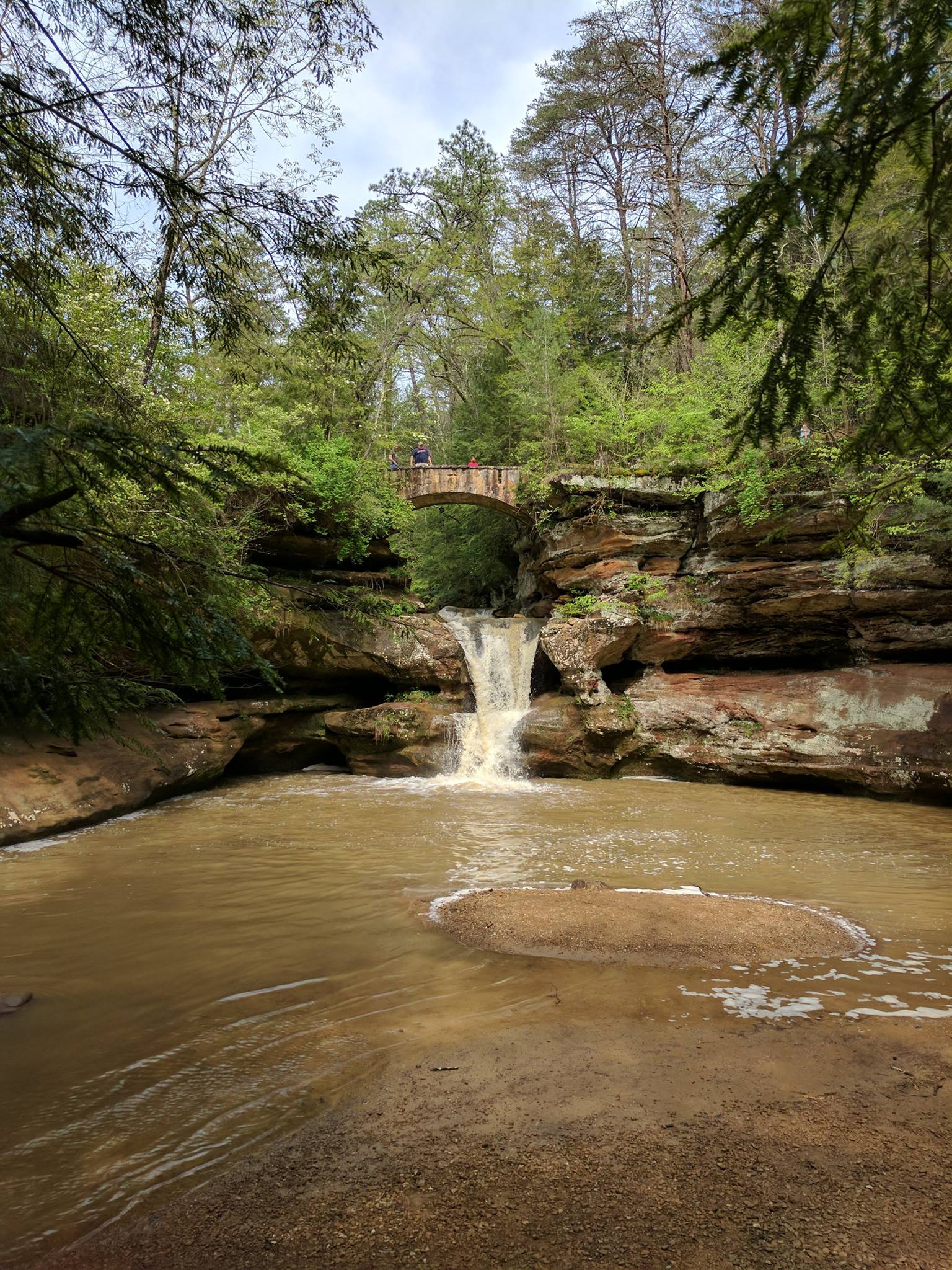
Hocking Hills
A former colleague of mine claimed that Ohio was not landlocked because it bordered Lake Erie. I do not buy it. But in the absence of the sea, it is a wonderful and restorative resource.
⑩ Five final attractions
There are always new things to see and experience! There is the quirky or the distinctive or the plain odd (the now defunct Longaberger Company office building near Newark in the shape of a large basket). There are museums on all sorts of things (the Popcorn Museum in Marion, for example), festivals (the Twins Days Festival in Twinsburg), and of course celebrations of the various heritages and communities to have settled in Ohio over the years (Columbus's Somali Cultural Festival).
Mansfield and the Shawshank Redemption
Shawshank Redemption was shot in the Ohio State Reformatory, Mansfield. It is open for tours and events. We visited expecting movie sights and memorabilia. We weren't prepared for the grim brutality of the prison itself.
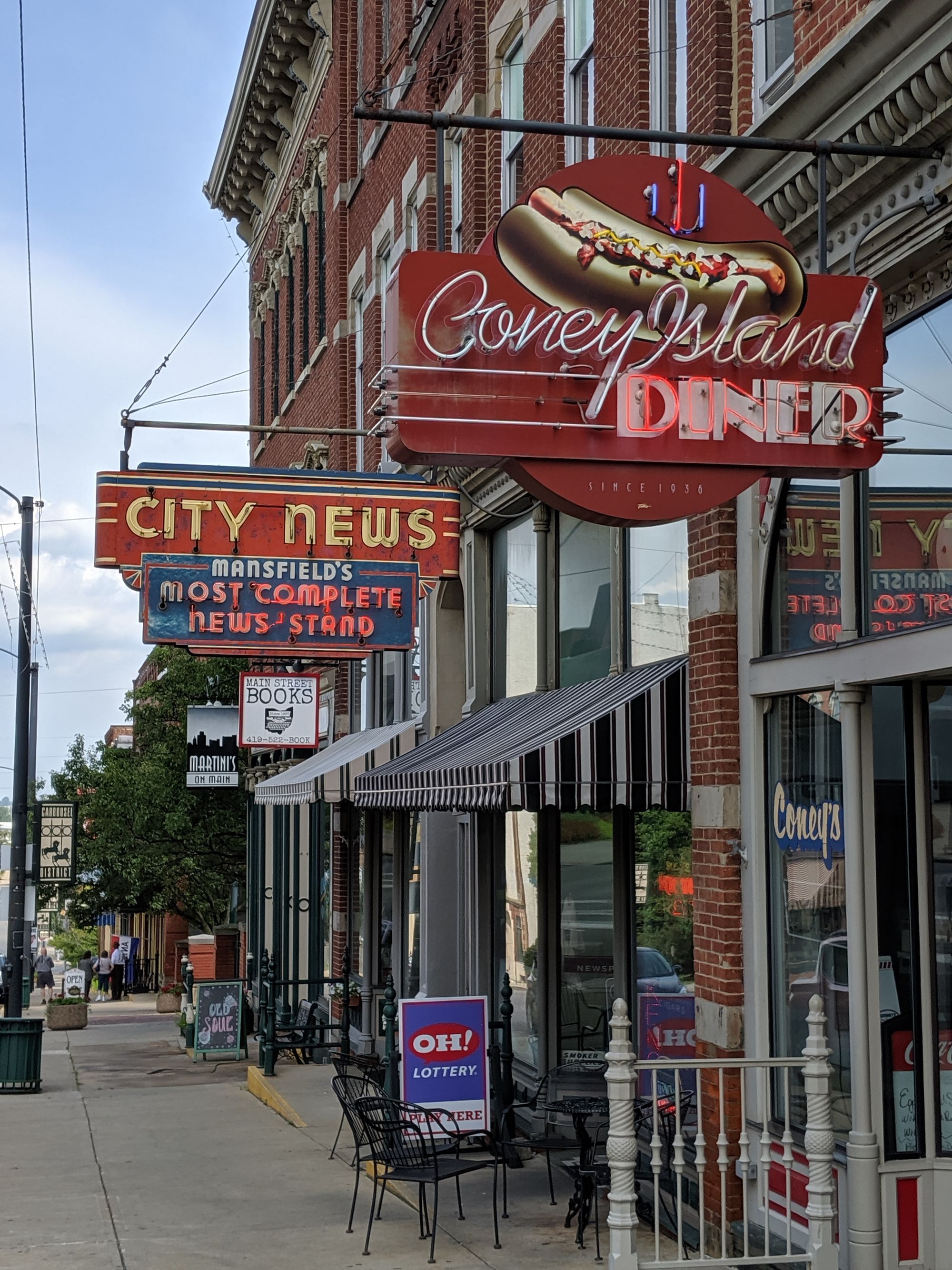


Downtown Mansfield. Inside the Reformatory.
Bellefontaine, the highest place in Ohio
Bellefontaine in central Ohio is the highest point in state. However, driving through, one might not notice given the flat expanses of Ohio. Much of Ohio is covered in corn, soy beans and other crops. Bellefontaine also claims to have both the oldest concrete street in America and the shortest street.
The largest employer in the town is Honda, which has plants nearby (the Honda Accord is made in Marysville, between Columbus and Bellefontaine), and the downtown has been held up as a model of revitalization, preserving historic buildings and attracting small businesses.

Lehmans Store in Kidron
Ohio has the second highest Amish population in the US after neighboring Pennsylvania. Kidron was originally established in Northeast Ohio by a group of Swiss Mennonites fleeing religious persecution. It is home to Lehmans, the store that specialises in "non-electric" goods "for a simpler life." It serves the surrounding Amish population but is now also an attraction for others. It has a remarkable collection of goods in a very large space, including many historic collections.
Besides the Amish, tourists, and jittery citizens, the store is a resource for homesteaders, missionaries, environmentalists, survivalists, and doctors in developing countries, to purchase items needed for simple living. Lehman's also counts among its customers the American Red Cross,[7] Peace Corps volunteers, and Hollywood set designers also use the store to find historically accurate items for decorating period sets. // Wikipedia
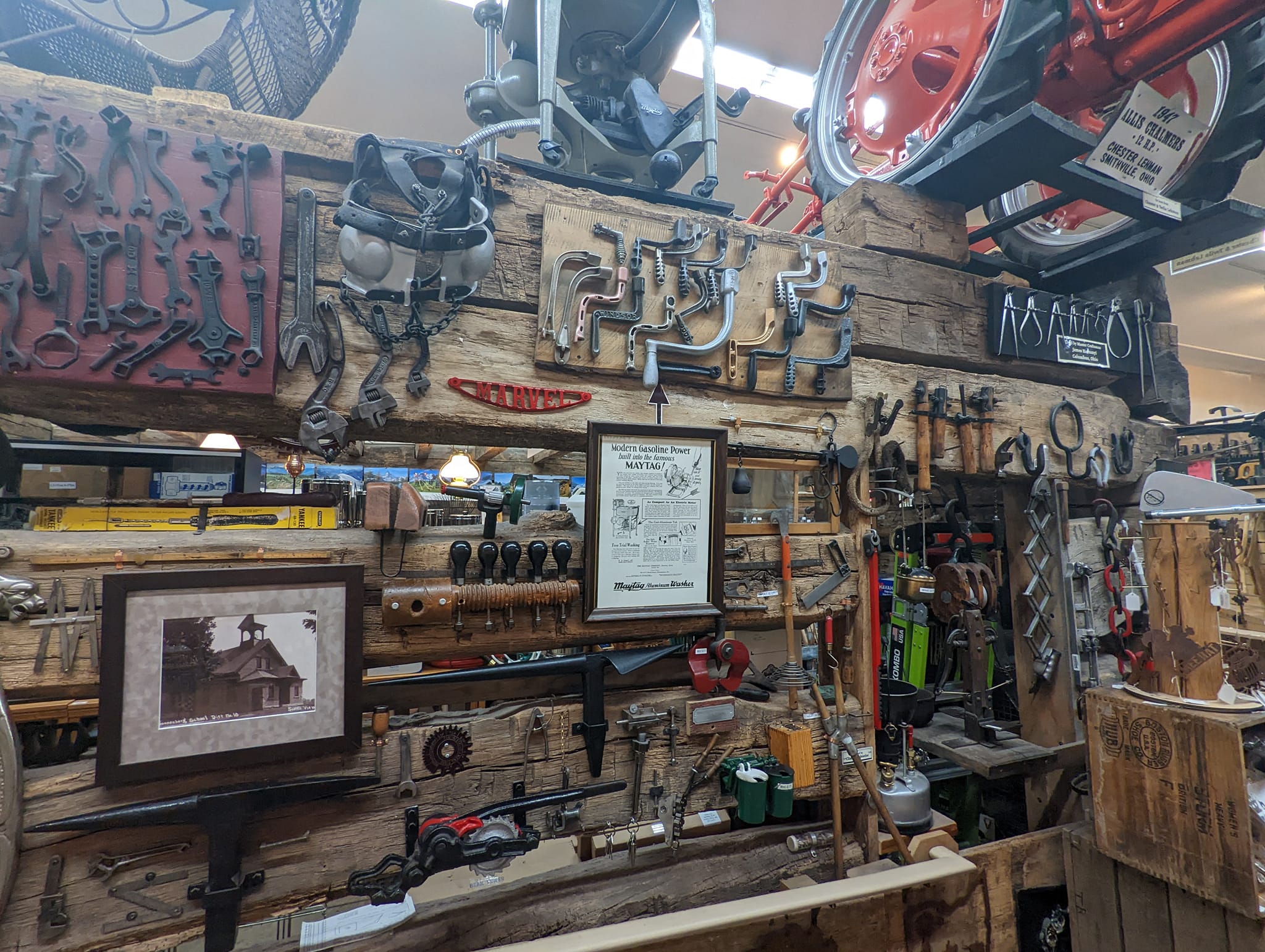


Lehmans - electricity free living
Neil Armstrong Museum in Wapakoneta
Ohio was the birthplace of a many astronauts. These include Neil Armstrong and John Glenn, who went on to have an important political and academic career in Ohio. Jim Lovell and Judith Resnick (who died in the Space Shuttle Challenger tragedy) were also from Ohio. Kathy Sullivan, the first woman to walk in space, spent some of her long scientific career in Columbus as head of COSI, the science center, and with Battelle. Of course, Ohio has a distinguished place in flight history and the Wright brothers did much of their work in Dayton. Dayton is also home to the National Museum of the United States Air Force, a major destination.



Left: Nice picture of John Glenn and Neil Armstrong. The Armstrong family home. Entrance to the museum.
Neil Armstrong was born in Wapakoneta, and he is commemorated with a lovely small museum, the Armstrong Air & Space Museum, devoted to his life and career, and to space flight more generally. It includes personal items like his bicycle and his father's scrapbook alongside a collection of space suits, equipment and space flight objects.
The Billy Ireland Cartoon Library and Museum in Columbus



Billy Ireland exhibitions
A museum, a library, an archive. The Billy Ireland Cartoon Library and Museum represents the biggest collection of materials relating to cartoons and comics anywhere in the world. There is a public gallery, regular exhibitions and deep collections all managed by a small, committed staff which makes an outsized impact. In its own dedicated space, it is a part of the library at The Ohio State University. The Billy Ireland is a significant factor in what makes Columbus a center for comics, and every year people come from around the world to a major event, Cartoon Crossroads Columbus.

Ohio flowers
Pictures: all the pictures were taken by me, except for downtown Pittsburgh, which is from Wikimedia Commons (David Schwab, U.S. Army Corps of Engineers, Public domain, via Wikimedia Commons).
Note: I use 'we' throughout, acknowledging our shared experiences and conversations. Of course, Ann Lennon might write things differently and compile a heavily overlapping but different list!
Acknowledgement: Many thanks to Kate Gaylord for offering valuable advice on an earlier draft.
Updates: 9/18/23 reordered and added Jungle Jim pic. 9/29/23 added Billy Ireland section. 10/02/23 added updates to Hocking Hills and Native American Earthworks sections. 11/4/23 corrected 9 items to 10 and added numbers. 12/10/2023 swapped feature picture.






